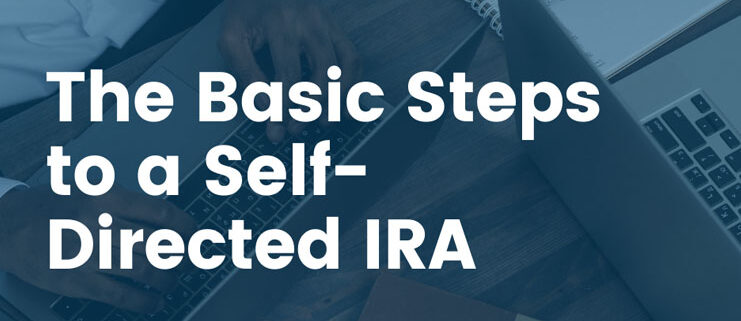The Basic Steps to Self-Directed IRA Investments
You might have heard of the Self-Directed IRA and all that it can do for your retirement. It can open up all sorts of avenues for investment—from real estate to precious metals. And it can give you more freedom and control beyond the typical stocks and bonds. Whether you’re interested in real estate, precious metals, private equity, or other alternative investments, Self-Directed IRAs can be a powerful tool for diversifying your portfolio and potentially enhancing your returns. But one question remains:
How do you start a Self-Directed IRA if you’ve never been part of this world before? Over at our Get Started Guide, we highlight some key ways you can start investing off the beaten path. And it’s much simpler than you might have imagined. If you’re not familiar with Self-Directed IRAs, here’s what you’ll need to know to begin.
Opening Your Self-Directed IRA
The first step towards your first Self-Directed IRA is to open an account with a trusted custodian like American IRA, LLC. You can easily initiate this process by calling 866-7500-IRA or downloading the necessary forms directly from our website. Once your account is established, you’ll have the freedom to explore all sorts of investment opportunities. Now you’re in charge. You’ll get to pick all sorts of investments to create your unique mix of assets and asset classes so your portfolio is what you decide.
Funding Your Account
After opening your Self-Directed IRA, it’s time to fund your account. There are four primary methods for doing that:
- Contribution: You can contribute personal funds to your Self-Directed IRA throughout the year, subject to annual contribution limits determined by factors such as age, income, and retirement plan type.
- Conversion: If you have assets in a Traditional IRA, you can opt to convert all or part of them into a Self-Directed Roth IRA. It’s essential to understand the tax implications of such conversions before proceeding.
- Rollover: You can initiate a tax-free rollover of cash and/or assets from one retirement account to another, provided you adhere to the guidelines regulating rollover transactions.
- Transfer: Directly transfer cash and/or assets from one Self-Directed IRA account to another without incurring taxes or limitations on the number of transfers within a given timeframe.
Identifying Your Investments
Once you have funds in the account, the next question is simple: where does the money go? It’s time to identify your investment opportunities. Whether you’re eyeing residential real estate, precious metals, private businesses, or other alternative assets, the key is to align your investment choices with your financial objectives and risk tolerance. And, potentially, your experience.
Executing Your Investments
Once you’ve pinpointed your desired investment, you’ll need to communicate your intentions to your custodian. This typically involves submitting a Buy Direction Letter outlining the specifics of your investment, such as the asset, purchase price, and seller details. Additionally, you’ll need to ensure that all assets are titled in the name of your Self-Directed IRA to stay compliant with IRS regulations.
To streamline the management of your Self-Directed IRA investment, you might want to think about authorizing your custodian to make payments on your behalf for expenses related to your assets. This may include recurring payments for property management fees, for example. Or it may include insurance premiums or property taxes. Whatever it is, reach out to your Self-Directed IRA administration firm to see what’s possible.
By following these basic steps, you can harness the power of Self-Directed IRAs to diversify your retirement portfolio and pursue alternative investment opportunities. Interested in learning more about Self-Directed IRAs? Contact American IRA, LLC at 866-7500-IRA (472) for a free consultation. Download our free guides or visit us online at www.AmericanIRA.com.









